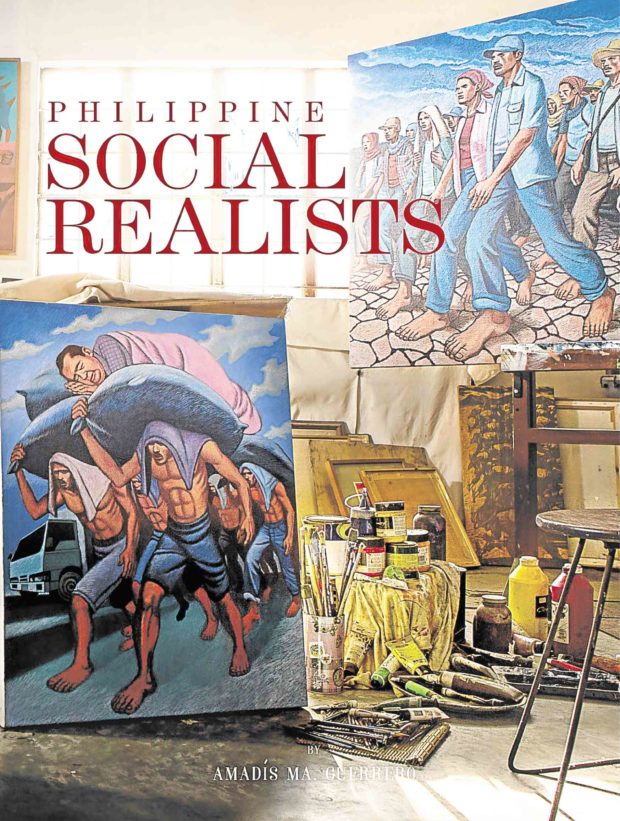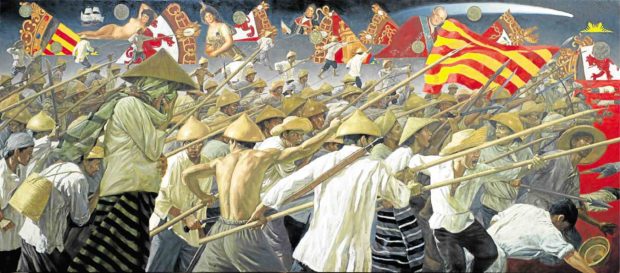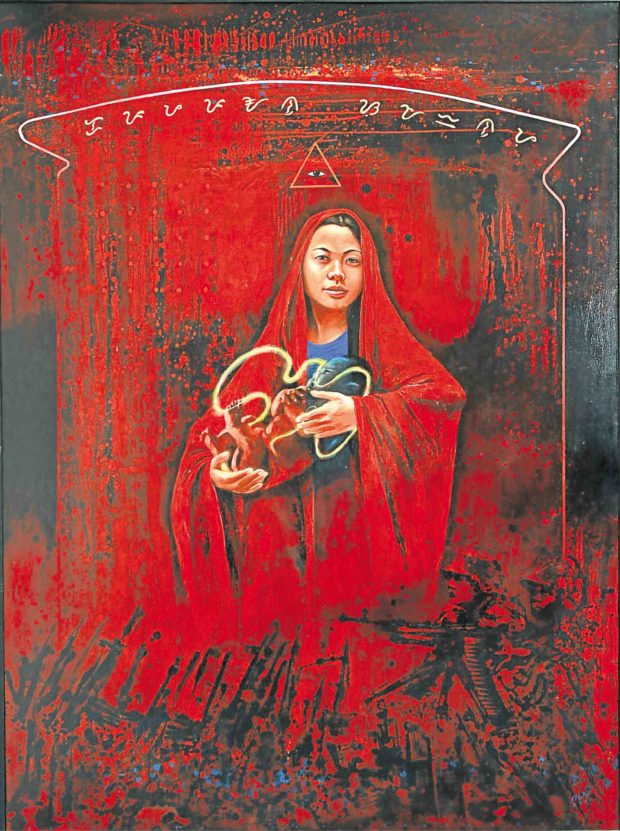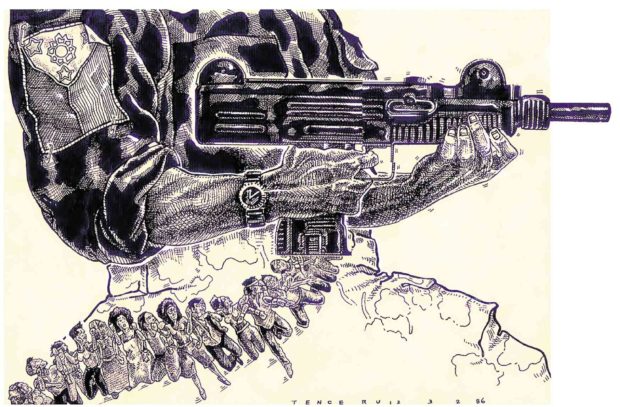
If you live in a country like this, how can you not make art like this?”
Contemporary Filipino artist Jose Tence Ruiz asks this rhetorical question in Amadís Ma. Guerrero’s “Philippine Social Realists,” a new coffee-table book published by the Erehwon Center for the Arts, which will be launched Aug. 30.
In it, Guerrero—a veteran cultural observer and longtime Inquirer Lifestyle contributor—takes a look at the life and work of 10 Filipino artists associated with the enduring art movement.
Aside from Ruiz, these are Nunelucio Alvarado, Demetrio dela Cruz, Antipas Delotavo, Neil Doloricon, Imelda Cajipe-Endaya, Edgar Talusan Fernandez, Karen Ocampo Flores, Renato Habulan and Pablo Baen Santos.
In many ways, the repressive martial law regime of Ferdinand Marcos was the crucible in which what we now think of as Philippine social realism was forged, although the use of art as social critique has important antecedents that date back as far as the Spanish colonial era.
Language of protest
The first generation of social realists came of age during the rise of nationalist fervor and student activism that found expression in massive street protests at the start of the 1970s. The progressive movement went underground with the advent of the martial law regime, but it found a voice in the art of the social realists.
The language of protest moved from the streets to the art galleries, where like-minded artists formed Kaisahan as a conscious alternative to the state-sanctioned art promoted by Imelda Marcos’ cultural apparatus.

The group’s manifesto read, in part: “We shall develop an art that reflects the true conditions of our society. This means, first of all, that we must break away from the Western-oriented culture that tends to maintain the Filipino people’s dependence on foreign goods, foreign tastes and foreign ways that are incompatible with the genuine national interests. We reject this culture insofar as it perpetuates values, habits and attitudes that do not serve the people’s welfare, but withdraws from whatever is useful to their actual needs.”
In its earliest incarnation, Philippine social realism drew on the well-worn tropes of socialist propaganda art: the noble, downtrodden masses toiling under the bootheel of venal capitalism, long-suffering Inang Bayan grieving over her fallen children or defiantly taking up arms to defend them, the eternal poor enduring their lot with the patience of the proverbial carabao.
With the advent of globalization and the age of information, however, these images began to look very old hat, indeed.
Eventually, a more complex visual shorthand developed in response to changing objective conditions, specially after the downfall of the Marcos regime and the return to nominal democracy.
The emergence of younger artists also coincided with an expanded range of concerns for the social realists, such as women’s rights, the environment, the Filipino diaspora, the peace movement and so on. Some of them even began to take issue with the term “social realism” itself, seeing it as dated and limiting.

(In fact, Guerrero says a number of artists that he initially included in the book eventually begged off, citing their increasing discomfort with the label.)
DNA
Nevertheless, the overall picture that emerges from “Philippine Social Realists” is of a tendency that is part of the DNA of Filipino art, whether the artists consider themselves social realists or not.
Once considered hopelessly retrograde, Philippine social realism has received a booster shot of adrenaline with Rodrigo Duterte’s war on drugs and the wave of extrajudicial killings that followed in its wake.
In the age of “post-truth” and “alternative facts,” contemporary artists whose work falls within the critic Alice Guillermo’s definition of social realism as “art which exposes the true conditions of society, as based on the artist’s keen observations of reality and proffers alternatives for human betterment,” continue to make strong aesthetic statements at art fairs and gallery shows both here and internationally.

Guerrero is something of a social realist himself, exploring themes of labor unrest and urban poverty during the Marcos years in his Palanca Award-winning short story “Children of the City” (1971) and other works. His affinity for the social realist project thus makes him the ideal chronicler for the movement.
“I’m not a critic, I’m a feature writer,” says Guerrero. “My approach is reportorial rather than critical.”
By shedding light on the formative experiences of the artists he surveyed, Guerrero manages to trace the fountainhead from which their art springs.
“A veteran interviewer and chronicler of cultural events, Guerrero applies his almost surgical skills in exacting information and insights from his subjects, who, to their credit, remain as unflinching as ever in their pursuit of the truth of the conditions of their country,” writes art critic Cid Reyes in his introduction to the book.

“Guerrero traces their individual life stories from childhood to their artistic awakening, leading to their nationalist fervor, and in so doing, has unearthed a wealth of heretofore unknown material that would surely be lost with the passage of time and life.”
“Philippine Social Realists” will be launched Aug. 30, 4 p.m. at Erehwon Center for the Arts, Erehwon Building, 1 Don Francisco St., Villa Beatriz, Old Balara, Quezon City. The book launch is part of Erehwon Fiesta 2019, an annual art festival at Erehwon Center for the Arts. An SR art exhibit curated by professor Santiago Albano Pilar will be held with the book launch.













































